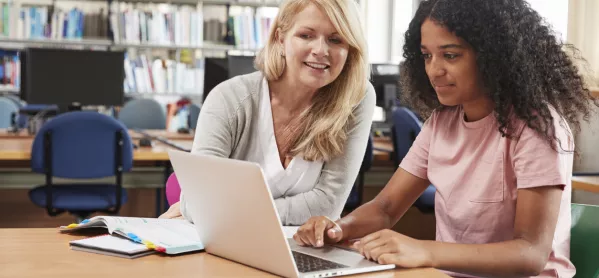- Home
- 4 ways to help GCSE and A-level students with dyslexia
4 ways to help GCSE and A-level students with dyslexia

Having tried desperately to focus on a recorded A-level ancient history class, I slumped against my bedroom desk: no subtitles or written alternative to the lesson were there to make absorbing the information possible. There was no one on hand to explain it, either.
That’s when I realised: remote learning puts dyslexic students like me - particularly those studying for GCSEs and A-levels - at a real disadvantage.
Most schools have now returned to face-to-face teaching. But what lessons can teachers take away from the recent period of online learning about how to better support students with dyslexia?
And how can they make sure that those students are not again at a disadvantage in the event of a second lockdown?
GCSE and A-level adaptations
Students with dyslexia face challenges with reading, writing, processing information, memorising and organisation. I am not alone in finding that these issues were exacerbated during the recent shift to online education.
Caitlen Russell, a dyslexic student from Lincolnshire, also found it difficult to learn in lockdown.
“I’ve struggled with not actually being there in class, seeing the slides in person and being able to talk through the class,” she says.
How to support students with dyslexia
So, what does this mean for lessons in the new term? Here are some tips for how teachers can support dyslexic students next term, both in classrooms and online.
1. Share resources in advance
Gillian Ashley, interim CEO of the British Dyslexia Association and a former teacher, says that it is important to give students the opportunity to familiarise themselves with content before consolidating it and enable them to ask any questions they may have in class.
“What teachers need to do is make sure that the pupils they’re teaching with dyslexia have got the worksheets or the PowerPoint in advance of their lesson,” she explains.
2. Make things multi-sensory
According to Ashley, one of the most effective ways to teach learners with dyslexia is to take a multi-sensory approach.
“We know for learners with dyslexia that things need to be taught in a multisensory way. That means they need to engage their senses at the same time,” she says.
3. Allow for ‘overlearning’
Students with dyslexia will also benefit from being given the opportunity to “overlearn”, says Ashley.
“When we overlearn we are fluent in what we’re doing, we do it without thinking. That’s what our teachers have got to begin to embed much more, particularly at secondary school,” she says.
To support a dyslexic student with overlearning, the teacher would have to set extra worksheets or other activities on top of the classwork. And Ashley also stresses that recording virtual classes is fundamental here.
“We shouldn’t be afraid to have our lessons recorded because we know that, if you’ve got dyslexia, just having that opportunity to go back to lesson content is essential - it’s just about having that second and third chance.”
Caitlen agrees that it would have been really helpful to have a recording of live lessons available for her to watch to consolidate any points she missed during online learning. Having the opportunity to have a video call with her teacher to talk through the lesson would also have been useful, she adds.
4. Make the most of apps
Software designed to help students with specific learning difficulties can be a fantastic way to make the school curriculum more accessible.
Though some technologies are costly, there are also very affordable options and others that are free.
Ashley recommends the ”Wheel of Apps” resource, produced by CALL Scotland and the University of Edinburgh, which categorises apps according to the skills they support.
“[It is] a really nice resource because it covers key areas like reading, like spelling, like organisation, and it gives you all of the different apps that you can access for those things. Some of them are free and some are not,” she explains.
The array of apps on this resource is its strength, as every dyslexic person has different tasks they find particularly difficult and their individual ways of working through them.
“I could give you different programmes but ultimately the most effective means of working has to be worked out by the learner themselves,” Ashley says. “That’s where, as schools, we need to start working really actively with our dyslexic learners so that their part of that process is working out how best they work.”
Ollie Wells is a Year 13 student
Keep reading for just £1 per month
You've reached your limit of free articles this month. Subscribe for £1 per month for three months and get:
- Unlimited access to all Tes magazine content
- Exclusive subscriber-only stories
- Award-winning email newsletters

